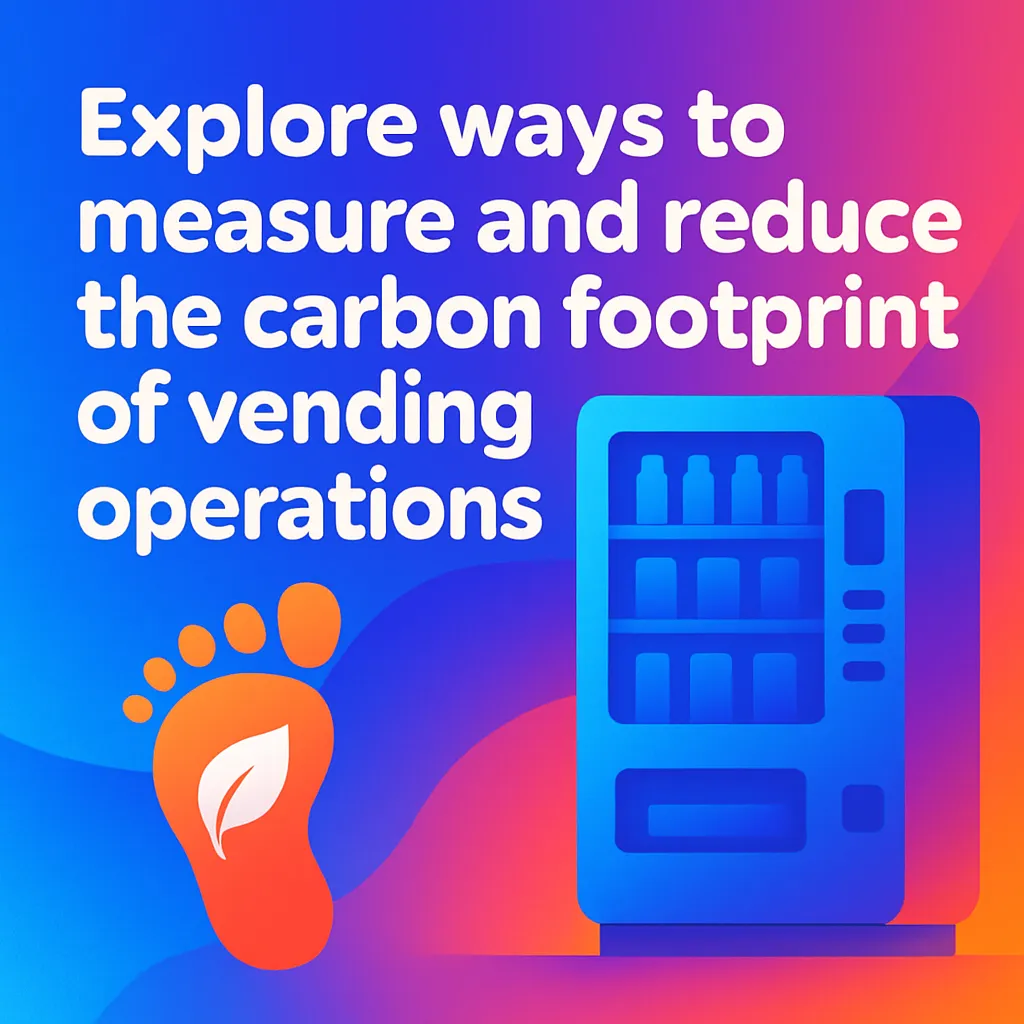The Carbon Footprint of Vending Machines: Understanding and Reducing Environmental Impact
Explore ways to measure and reduce the carbon footprint of vending operations.
Back to Eco Friendly Vending ResourcesExplore ways to measure and reduce the carbon footprint of vending operations.
Back to Eco Friendly Vending ResourcesUnderstanding the environmental impact of vending machines is crucial for businesses aiming for sustainability. From manufacturing to daily operation, several factors contribute to their carbon footprint.
![]() Energy efficiency significantly lowers operational greenhouse gas emissions.
Energy efficiency significantly lowers operational greenhouse gas emissions.
![]() Sustainable product sourcing reduces supply chain environmental impact.
Sustainable product sourcing reduces supply chain environmental impact.
![]() Recycling and proper disposal minimize waste and maximize resource recovery.
Recycling and proper disposal minimize waste and maximize resource recovery.

The carbon footprint of vending machines encompasses a range of environmental considerations, from the raw materials used in their construction to the energy consumed during their operational lifespan. As businesses increasingly prioritize sustainability, understanding these factors becomes vital for making responsible choices. The primary contributors typically include manufacturing processes, transportation logistics, electricity usage, and end-of-life disposal.
One of the most significant environmental impacts stems from a vending machine's energy consumption. Refrigerated machines, especially older models, can draw considerable power to maintain optimal temperatures for beverages and perishable snacks. However, advancements in technology have led to the development of energy-efficient vending machines that drastically reduce electricity usage. These newer units often feature LED lighting, advanced insulation, and smart idle modes, aligning with modern green initiatives.
Beyond the machine itself, the products it dispenses also play a role. The carbon footprint of these items includes their production, packaging, and transportation. Opting for locally sourced products, items with minimal or recyclable packaging, and considering healthy choices can further lower the overall environmental impact. For instance, stocking sustainable choices can contribute positively, as detailed in our guide on healthy snack options for vending machines.
Transportation is another key area. The delivery of machines, routine restocking, and maintenance visits all involve vehicle emissions. Businesses can mitigate this by choosing vending partners who optimize their routes, use fuel-efficient vehicles, or strategically place machines to reduce travel distances. Furthermore, investing in smart vending technology can provide remote monitoring and inventory management, significantly reducing the need for frequent site visits and improving overall operational efficiency.
Finally, the end-of-life management of vending machines and their components is crucial. Proper recycling and disposal ensure that materials are recovered and reused, preventing them from ending up in landfills. Some forward-thinking companies even offer comprehensive recycling programs. Considering options like AI vending coolers can further support these efforts by providing advanced features that contribute to overall sustainability, as highlighted in the discussion around energy efficiency of AI vending coolers.
The carbon footprint of a vending machine includes emissions from manufacturing, transportation, electricity consumption during operation, and disposal at end-of-life.
Electricity consumption is a major contributor, especially for refrigerated machines that run 24/7. Older models are notably less efficient than modern, energy-star rated units.
Yes, many modern vending machines are designed with energy-saving features like LED lighting, improved insulation, and smart power management systems.
The products stocked in machines contribute to the overall footprint through their own manufacturing, packaging, and transportation emissions.
Refrigeration systems, particularly those using older refrigerants, can have a high global warming potential if leaks occur. Modern units use more eco-friendly alternatives.
Yes, smart telemetry allows for optimized restocking routes, preventing unnecessary trips, and remote monitoring can identify and resolve inefficiencies promptly.
Single-use packaging from dispensed products contributes significantly to landfill waste. Promoting reusable containers or offering bulk options can mitigate this.
Some vending operators and manufacturers offer recycling programs for end-of-life machines, ensuring materials are recovered and repurposed.
The logistics of delivering, installing, servicing, and restocking machines involve vehicle fuel consumption, creating transportation-related emissions.
Choose energy-efficient models, stock locally sourced and minimally packaged products, and partner with operators committed to sustainable practices.